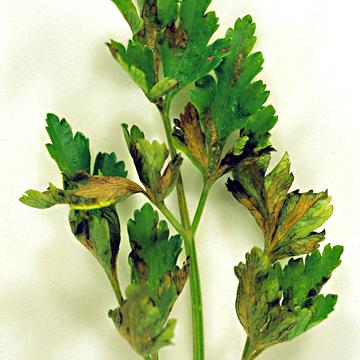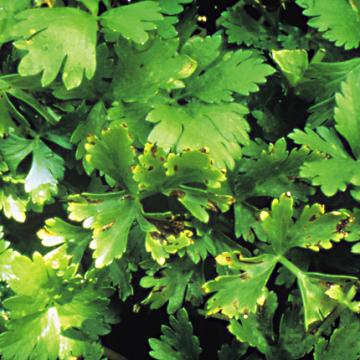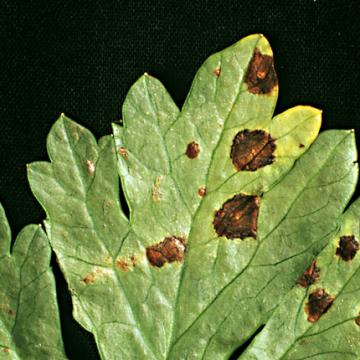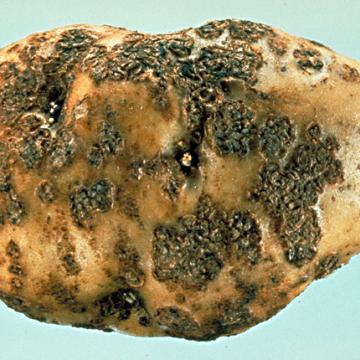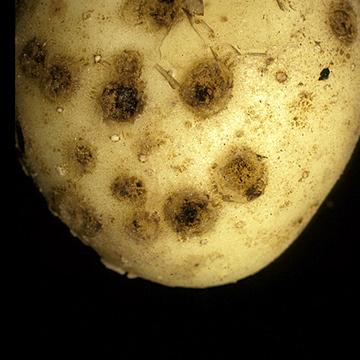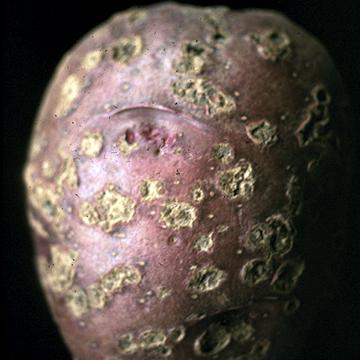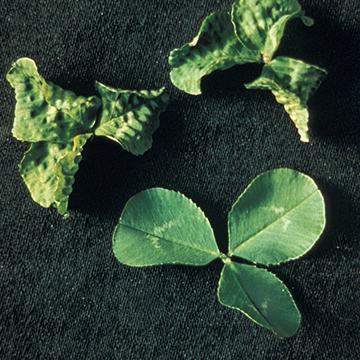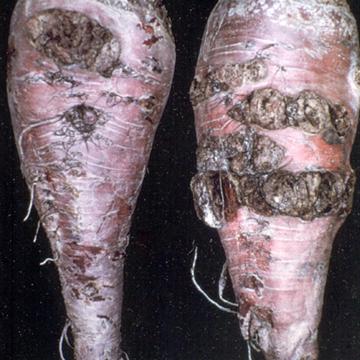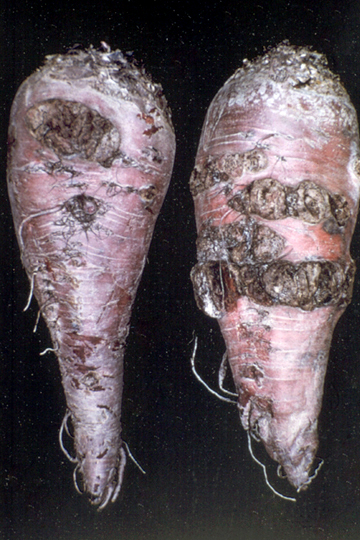DISEASE: Bacterial leaf spot and blight
HOST: Parsley
Blighted leaves with large, brown necrotic areas.
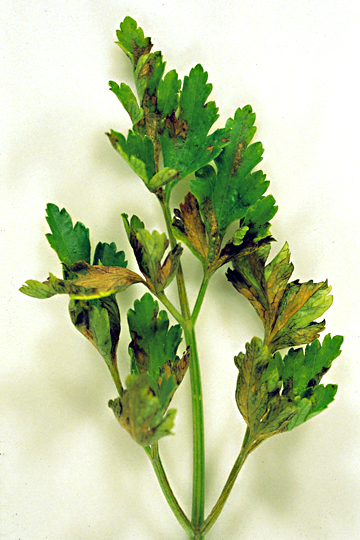
Bacterial leaf spot and blight | Parsley
DISEASE: Bacterial leaf spot and blight
HOST: Parsley (Petroselinum crispum)
PATHOGEN: Pseudomonas syringae pv. apii
SOURCE: APS
DISEASE: Bacterial leaf spot
HOST: Celery
Leaves with typical symptoms of rusty brown lesions with greasy appearance.
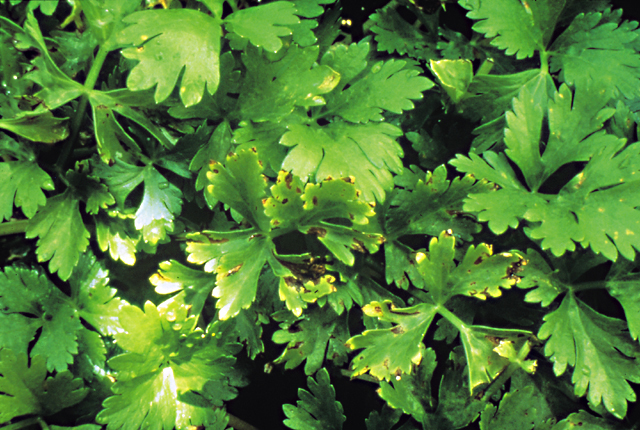
Bacterial leaf spot | Celery
DISEASE: Bacterial leaf spot
HOST: Celery (Apium graveolens)
PATHOGEN: Pseudomonas syringae pv. apii
SOURCE: R. Gilbertson
DISEASE: Bacterial leaf spot
HOST: Celery
Celery leaves with rusty brown lesions and some yellowing at leaf tips.
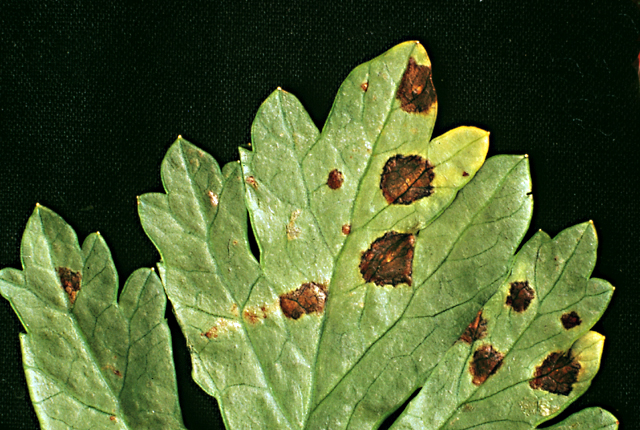
Bacterial leaf spot | Celery
DISEASE: Bacterial leaf spot
HOST: Celery (Apium graveolens)
PATHOGEN: Pseudomonas syringae pv. apii
SOURCE: S. Koike
DISEASE: Common scab (Potato scab)
HOST: Potato
Symptoms of common scab vary depending upon the cultivar. The lesions can be shallow or deep, erumpent and corky, and vary in color.
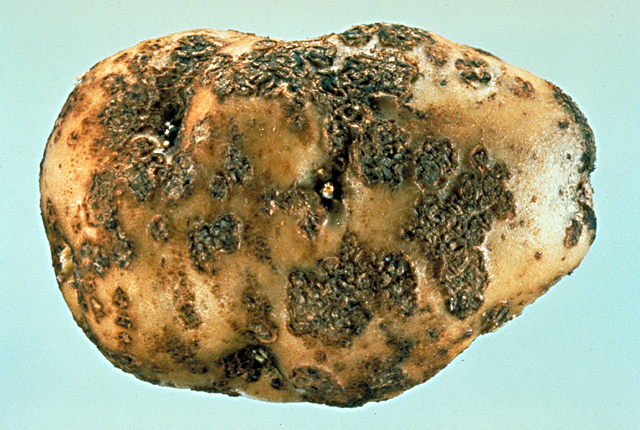
Common scab (Potato scab) | Potato
DISEASE: Common scab (Potato scab)
HOST: Potato (Solanum tuberosum)
PATHOGEN: Streptomyces scabiei
PATHOGEN SYNONYM: Streptomyces scabies
SOURCE: A. Secor
DISEASE: Common scab (Potato scab)
HOST: Potato
White-skinned tuber with sunken and superficial scab lesions.
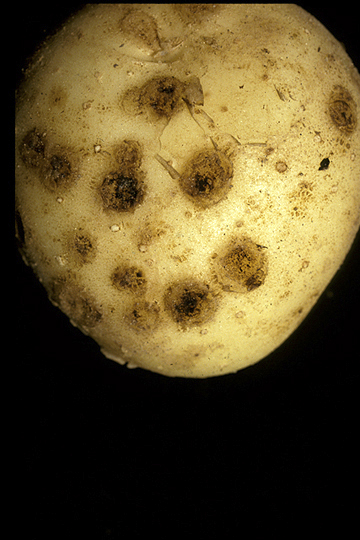
Common scab (Potato scab) | Potato
DISEASE: Common scab (Potato scab)
HOST: Potato (Solanum tuberosum)
PATHOGEN: Streptomyces scabiei
PATHOGEN SYNONYM: Streptomyces scabies
SOURCE: S. Thomson
DISEASE: Common scab (Potato scab)
HOST: Potato
Red-skinned tuber with lesions that usually penetrate less than 1 mm.
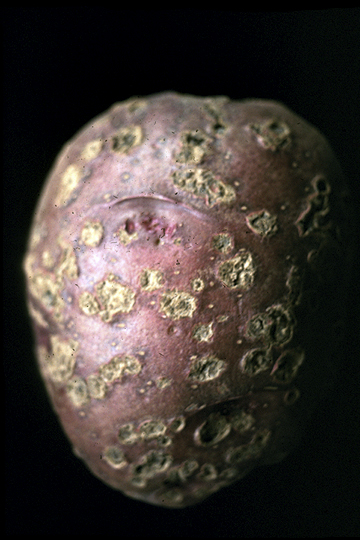
Common scab (Potato scab) | Potato
DISEASE: Common scab (Potato scab)
HOST: Potato (Solanum tuberosum)
PATHOGEN: Streptomyces scabiei
PATHOGEN SYNONYM: Streptomyces scabies
SOURCE: S. Thomson
DISEASE: Rugose leaf curl
HOST: Clover
Two rugose, distorted white clover leaves and a healthy leaf. Rugose leaf curl is caused by an unidentified phloem-infecting bacterium.
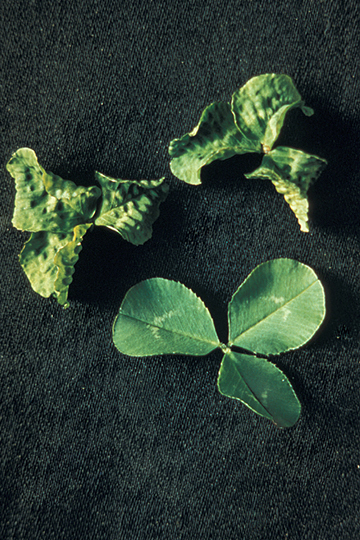
Rugose leaf curl | Clover
DISEASE: Rugose leaf curl
HOST: Clover (Trifolium repens)
PATHOGEN: Phloem-infecting bacterium
SOURCE: D. Teakle


